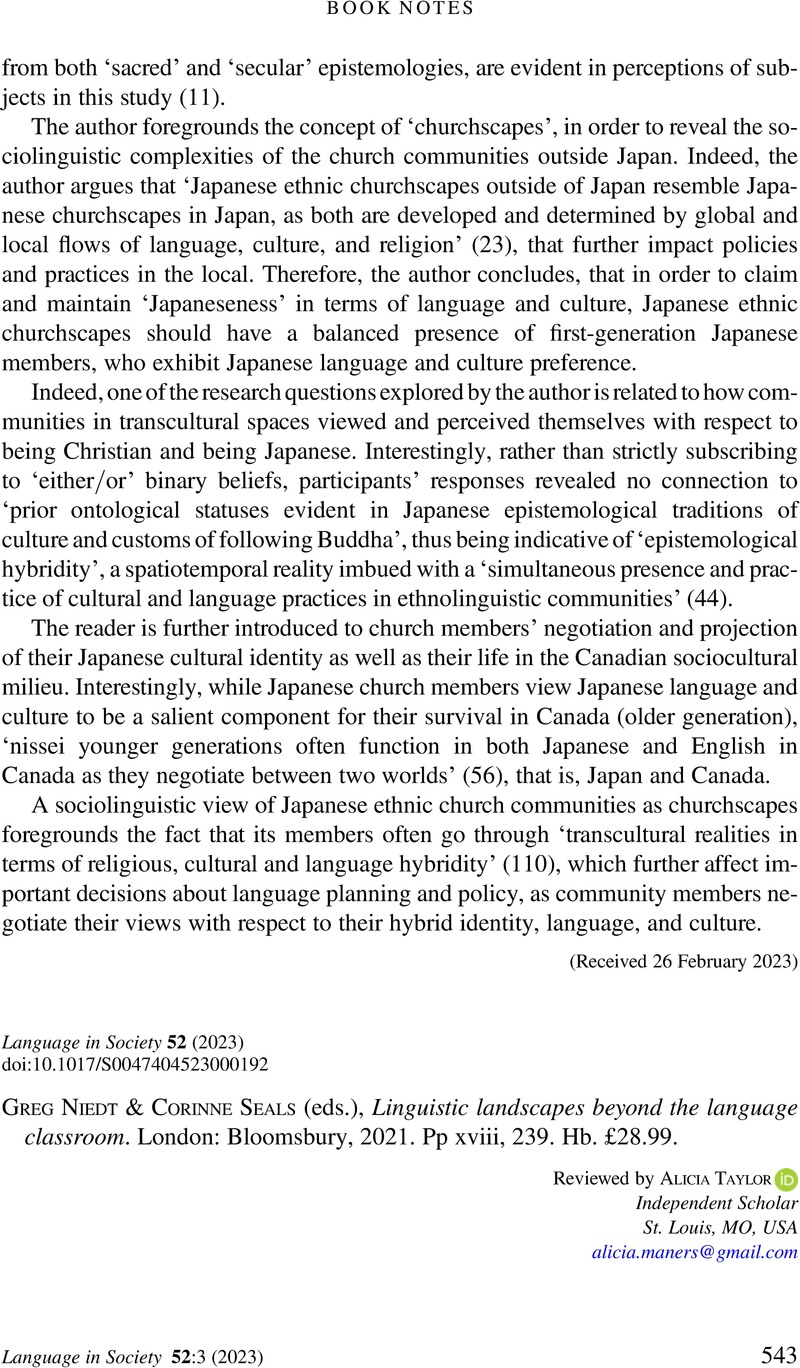No CrossRef data available.
Article contents
Greg Niedt & Corinne Seals (eds.), Linguistic landscapes beyond the language classroom. London: Bloomsbury, 2021. Pp xviii, 239. Hb. £28.99.
Review products
Greg Niedt & Corinne Seals (eds.), Linguistic landscapes beyond the language classroom. London: Bloomsbury, 2021. Pp xviii, 239. Hb. £28.99.
Published online by Cambridge University Press: 12 June 2023
Abstract
An abstract is not available for this content so a preview has been provided. Please use the Get access link above for information on how to access this content.

- Type
- Book Notes
- Information
- Copyright
- Copyright © The Author(s), 2023. Published by Cambridge University Press



